
2017 Honda City Facelift - Old Vs New
- Feb 11, 2017
- Views : 27776


The new Honda City is already a success having sold more units in its first month since launch than any of its predecessors ever managed. And to do so at a time when the automotive industry isn’t in its pink of health makes this feat even more commendable. But then, the City was always a popular model and when a new generation of a popular model arrives, it always manages to do well. We call it the honeymoon period. The real challenge for the new Honda City now will be to keep this momentum going. And to do that it must first prove to be a better buying proposition than the current king of the mid-sized class – the Hyundai Verna.
The Hyundai Verna is a good looking car, both inside and out. And, this is also partly the reason for its success. It looks modern and racy; upmarket and showy. And, now with its newly designed 16-inch alloy wheels and LED garnish for the projector type head lamps, there’s a hint more freshness to its design. Even otherwise, the Verna’s well defined lines and detailing, good proportions and a swopping roof line have always helped it give an added dose of visual drama missing in the competition.
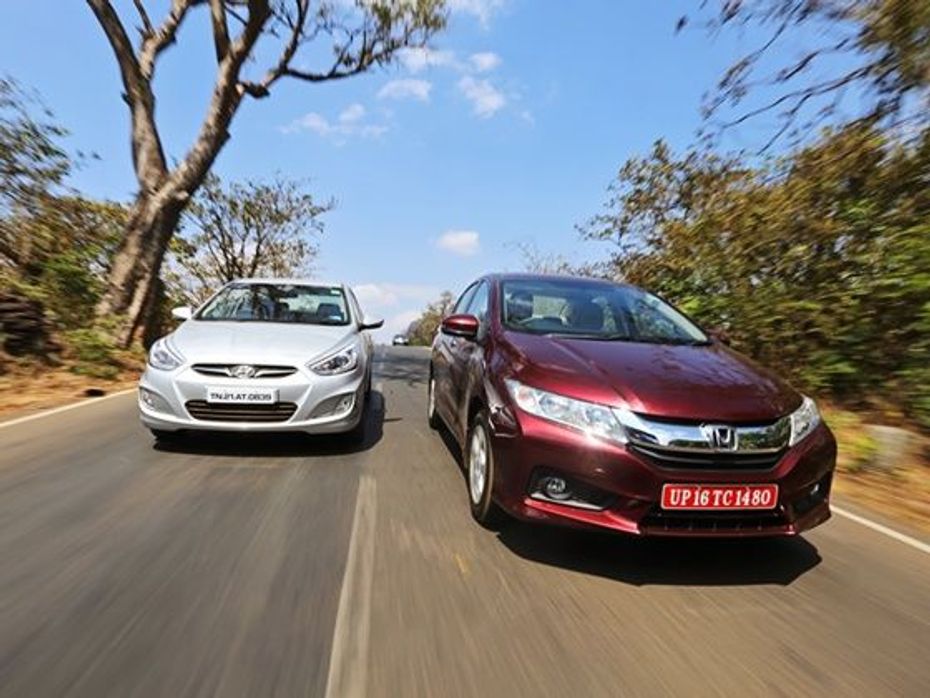
The new Honda City isn’t short on street presence either. It is more conventional looking than the Verna, but it still has a contemporary appeal. The wide chrome grille that integrates with the sleek headlamps as if it were all a single unit, give the new Honda City its unique identity. Its design lines are pronounced too and though the new City is exactly the same length as its predecessor, these lines help give the new car a sense of length and elegance one associates with more expensive cars. We also like the long tail lamp that runs into the bootlid. The only thing we didn’t like about the new City’s exterior is its 15-inch alloy wheel design; it just looks dated and low key.

The interiors, meanwhile, continue to impress. The dashboard’s driver focused layout looks dynamic and young. The ergonomics are spot on too with everything from the gear shifter to the power window buttons to the wiper and light stalks falling to hand almost intuitively. The driving position is well sorted, and the seats themselves – front and back – are large and supportive. These are one of the best in the class and better than the Verna’s even. The City is also more spacious, particularly at the back, and to top it, the Honda has a significantly larger boot as well.
The equipment list is long too. In the top of the line VX trim we have tested here, the City gets a touch-screen climate control system, a multifunctional steering with audio and cruise control functions, Bluetooth telephony, a trip computer and a sunroof as well. There are handy cup and bottle holders and functional stowage areas upfront, while at the rear there’s also an AC vent and two cup holders; the latter are part of the central armrest.
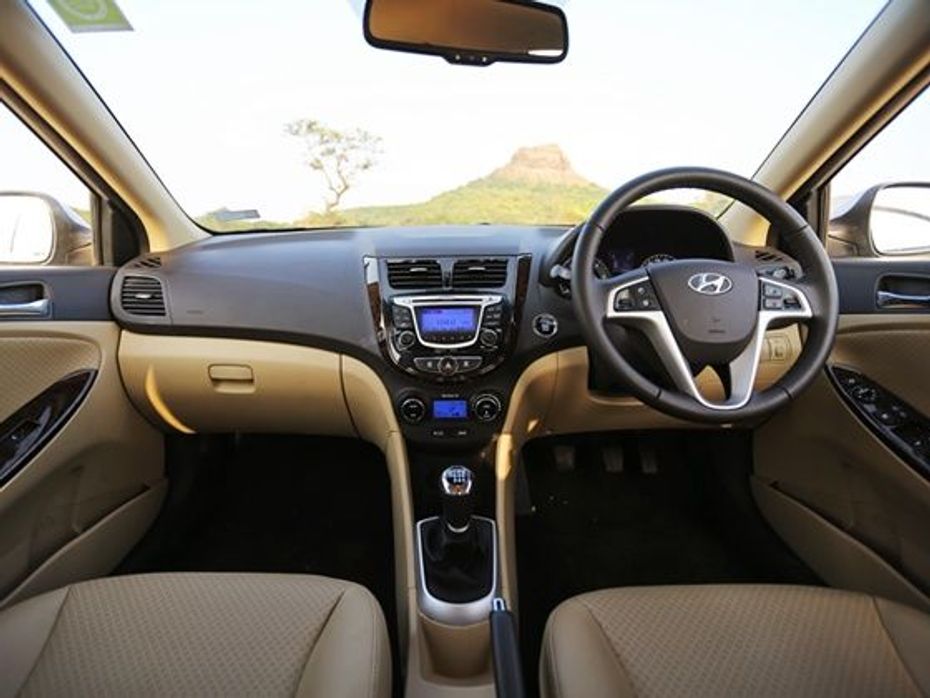
The face-lifted Hyundai Verna gets none of these convenience features for the rear passengers. It gets a usable rear armrest, and one that has some usable storage space, but no AC vents or cup holders at the rear at all. It doesn’t get cruise control or a sunroof either. What it does get over the new City is a cooled glovebox, automatic lights and wipers, an adjustable central armrest at the front and more posh looking plastic. And on the safety end, the Verna gets six airbags against City’s two in its top of the line SX (O) trim.
And, like the new City, the Verna also gets a single zone climate control system, an audio system with Bluetooth telephony, power ORVMs with fold function, and a height adjustable driver’s seat. Furthermore, there’s keyless entry and start, and a rear parking camera standard on both these variants we have here. So, in a sense these cars are quite well matched when it comes to standard equipment.
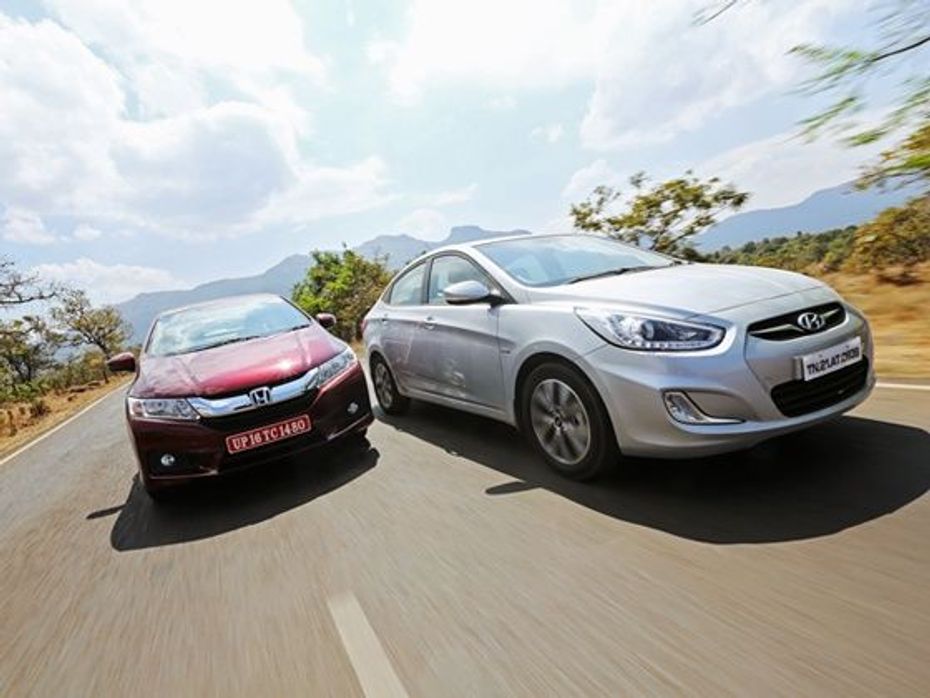
But, drivetrain wise, the new City and the face-lifted Verna are poles apart.
Both use modern four cylinder diesel engines and there’s less than 100cc between their engine displacements. But, on paper and in the real world, these cars deliver very different driving experiences. The new Honda City diesel is more focused towards efficiency; its ARAI figure of 26kmpl states this quite clearly. In fact, the City diesel is now the most fuel efficient car in the country! Its 1.5-litre, all-aluminum engine makes 100PS of max power and 200Nm of peak torque and it is mated to a 6-speed manual gearbox. The setup works well in the city or when cruising down the highway unhurriedly. It doesn’t exactly feel underpowered in this situation making easy work of moving into gaps without having to downshift too often.
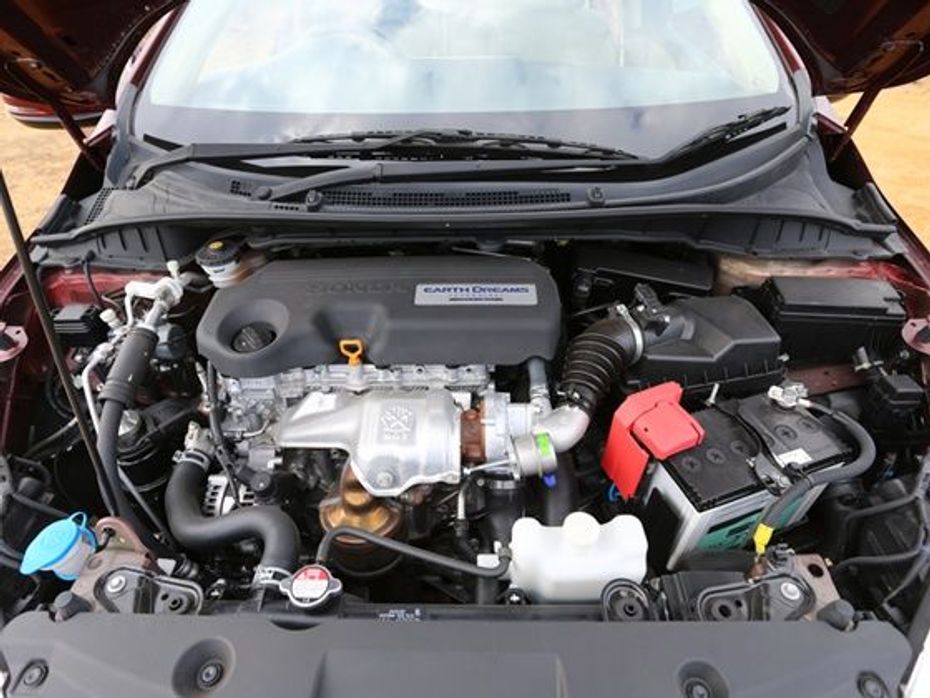
But, the problem arises when you want to drive the new City diesel hard. It’s not an engine that likes to be revved. But, if you want to get somewhere in a hurry, you have little choice but to give it the stick to get any sort of purchase. And, when you do, the engine gets loud and begins to sound and feel unrefined. Honda has increased the sound deadening on the City compared to the Amaze which uses the same engine and is louder still inside the cabin. But, the deadening on the City still doesn’t seem enough for a car in this class.
The Hyundai Verna meanwhile is quieter, and more refined. Its engine is more eager to perform in comparison as well. It revs more freely and the throttle response in the meat of the power band is far more alert. It displaces slightly higher capacity at 1582cc, but more importantly it packs in both significantly more power and torque; 26PS and 60Nm respectively.
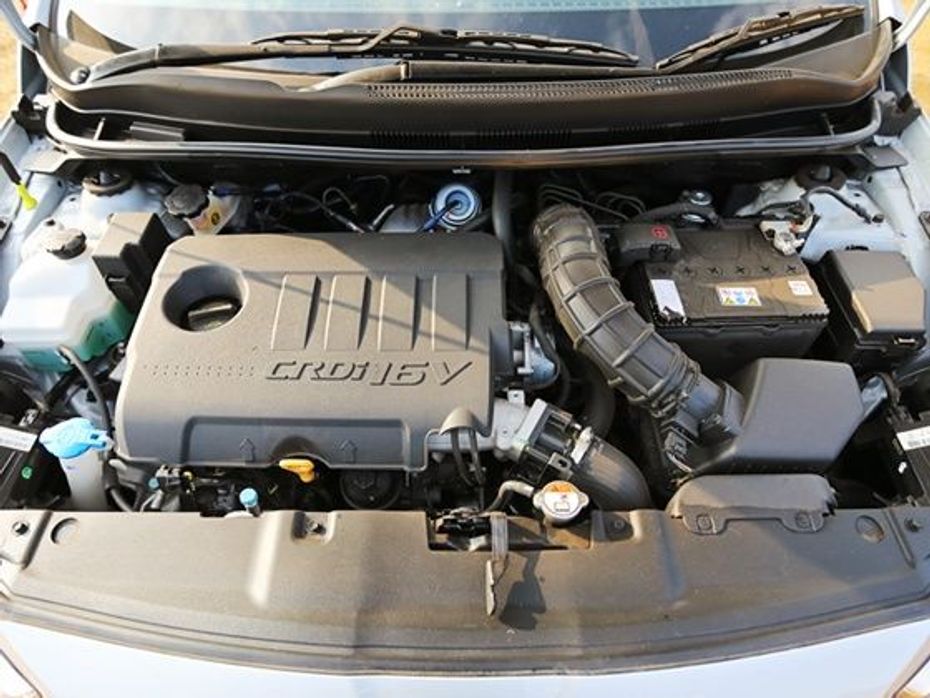
And one can feel this difference in the way the Verna dispatches overtaking maneuvers or handles a hilly section of road. Never did we find it wanting in any area of performance, especially after the City. The Verna as a result feels lighter on its feet and less effortless when driving longer distances on the highway. Needless to say, the higher output figures do take their toll on the car’s fuel economy ratings. Even with a 6-speed manual gearbox similar to the City’s the Verna’s ARAI figure still stands about 3kmpl lower than that of the Honda.

Another area where the City scores over the Verna is dynamics. Hyundai has revised the suspension setting on the face-lifted Verna making it slightly tauter than before and as a result there’s less wallowing. But, the Verna is still anything but an involving drive.
It feels planted in a straight line no doubt, even over mildly undulating roads at high speeds. It even feels surer under brakes than before. But, around a twisty section of road, the body movement is still pronounced; the communication from the chassis and steering is still inert; and it’s still not comfortable handling quick direction changes.
The new Honda City on the other hand, even with its skinnier tyres manages the twisty section better. We don’t think it will be faster around a hill climb, not with limited grip offered by its tyres and the limited go from the engine when exiting corners. But, with its better restrained body movements (read roll and pitch) and a less artificial and more precise steering feel, the City certainly feels more planted and chuckable. And with it, it elevates the driver’s confidence levels especially closer to the limit.

The new Honda City diesel rides better at speed as well. It feels less skittish and wallowy compared to the Hyundai. But, at slower city speeds the Verna does a better job. It returns a quieter and more absorbent ride over shallower pot holes and broken tarmac than the Honda. The Honda and Hyundai do score equally well when it comes to city compatibility, however. Both have clean and unrestrictive visibility upfront and through the ORVMs; the clutch and steering is light and effortless on both; and the turning circles are reasonably tight too.
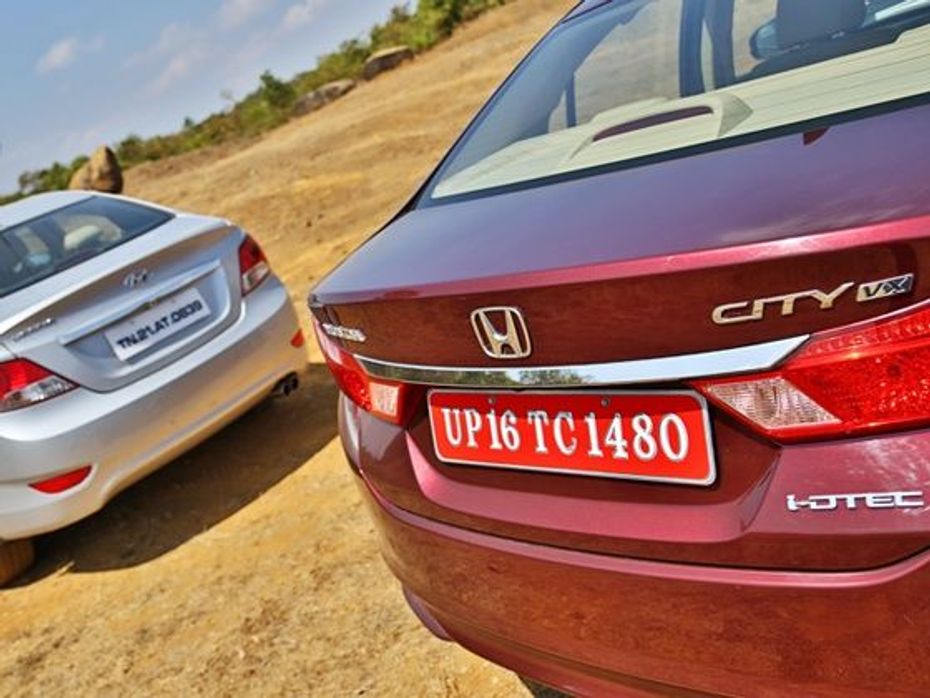
So, if we were to sum this test up, we’d say both the new Honda City diesel and the Hyundai Verna diesel had the potential to be truly outstanding cars. But, with their respective shortcomings - the Honda with its skinny tyres and an engine that could do with more guts, and the Hyundai with its artificial steering feel and dynamics that still need some work - are limited to good, value for money propositions.
These remain good cars to settle for, of course, but the question is which of two one should go for. Since both the Honda and the Hyundai have different characters, we’d say buy the Honda if you are looking for a comfortable, spacious and efficient commuter; there’s nothing like the City diesel in the city. But, if you are looking for something jazzier, spirited and with better mile munching capability, and a diesel engine that has no equal in it class, the Hyundai Verna diesel is the car to go for.

2017 Honda City Facelift - Old Vs New

2014 Ford Fiesta vs New Honda City vs Volkswagen Vento Diesel...

2014 Ford Fiesta vs New Honda City vs Volkswagen Vento: Diesel...

Honda City automatic vs Volkswagen Vento automatic: Comparison

New Honda City Diesel vs Petrol: Engine Comparison

New 2014 Honda City vs Ford EcoSport diesel: Cross-segment faceoff

New Honda City Diesel: how does it compare with the Hyundai Verna

New 2014 Honda City Diesel: how does it compare with the Hyundai...

New Honda City (2014) vs Third Generation Honda City: Quick Comparison

Fourth-gen Honda City Will Soon Face The Axe In India
 Maruti Dzire
Maruti Dzire
 Hyundai Verna
Hyundai Verna
 Honda Amaze
Honda Amaze
 Skoda Slavia
Skoda Slavia
 Maruti Ciaz
Maruti Ciaz
India's largest automotive community
 No More Diesel-iMT Powertrain In India, As Kia Discontinues It For The Sonet, Seltos And Carens
No More Diesel-iMT Powertrain In India, As Kia Discontinues It For The Sonet, Seltos And Carens
 Hyundai Creta Electric: Things You Get With Each Of Its 5 Variants
Hyundai Creta Electric: Things You Get With Each Of Its 5 Variants
 Here Are Some Adrenaline Pumping Experiences From Auto Expo 2025 That You Should Not Miss!
Here Are Some Adrenaline Pumping Experiences From Auto Expo 2025 That You Should Not Miss!
 All You Need To Know About The Surprise Element At Auto Expo 2025: BMW iX1 LWB
All You Need To Know About The Surprise Element At Auto Expo 2025: BMW iX1 LWB
 Honda Amaze
Rs. 7.99 Lakh
Honda Amaze
Rs. 7.99 Lakh
 Honda City
Rs. 11.82 Lakh
Honda City
Rs. 11.82 Lakh
 Honda Elevate
Rs. 11.69 Lakh
Honda Elevate
Rs. 11.69 Lakh
 Honda City Hybrid
Rs. 19.00 Lakh
Honda City Hybrid
Rs. 19.00 Lakh
 Honda Amaze 2nd Gen
Rs. 7.19 Lakh
Honda Amaze 2nd Gen
Rs. 7.19 Lakh
 Maruti Dzire
Rs. 6.79 Lakh
Maruti Dzire
Rs. 6.79 Lakh
 Hyundai Verna
Rs. 11.07 Lakh
Hyundai Verna
Rs. 11.07 Lakh
 Toyota Camry
Rs. 48.00 Lakh
Toyota Camry
Rs. 48.00 Lakh
 Honda Amaze
Rs. 7.99 Lakh
Honda Amaze
Rs. 7.99 Lakh
 Hyundai Aura
Rs. 6.54 Lakh
Hyundai Aura
Rs. 6.54 Lakh